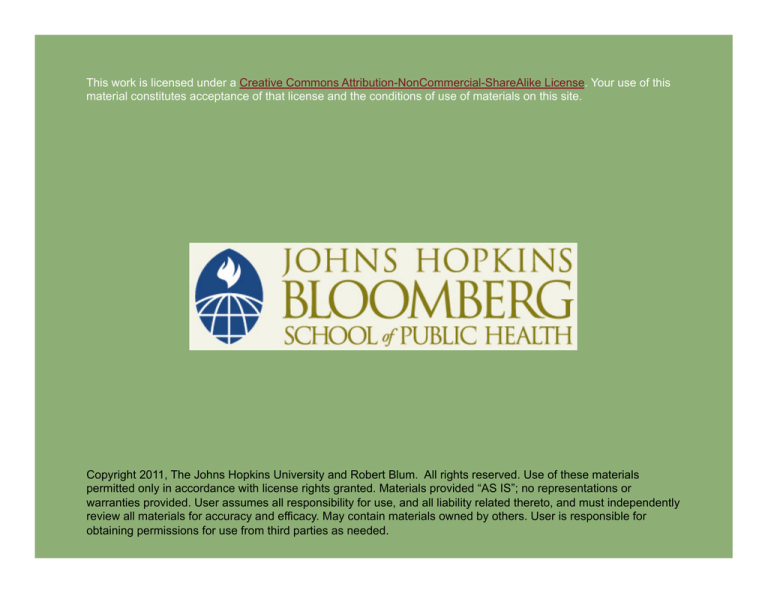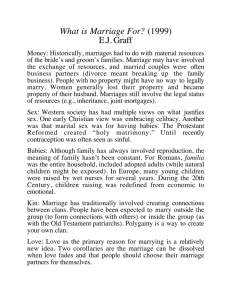
This work is licensed under a Creative Commons Attribution-NonCommercial-ShareAlike License. Your use of this
material constitutes acceptance of that license and the conditions of use of materials on this site.
Copyright 2011, The Johns Hopkins University and Robert Blum. All rights reserved. Use of these materials
permitted only in accordance with license rights granted. Materials provided “AS IS”; no representations or
warranties provided. User assumes all responsibility for use, and all liability related thereto, and must independently
review all materials for accuracy and efficacy. May contain materials owned by others. User is responsible for
obtaining permissions for use from third parties as needed.
Section B
The American Family, Historically
Pre-Industrial Revolution
Home was the center of
all production
Most people lived in
rural areas
Mothers’ roles and
fathers’ roles were clear
Photo source: http://commons.wikimedia.org/wiki/File:Schaeffer-haeusliche_Arbeit-1908.jpg. Public Domain.
3
The Industrial Revolution
With the Industrial
Revolution, goods
and services were
produced primarily
outside the home
The role of the
mother changed
The concept of
family changed
There was a
breakdown of
apprenticeship and
rise of child labor
Photo source: http://commons.wikimedia.org/wiki/File:Mill_Children_in_Macon.jpg. Public Domain.
4
1870s–1900
“Little Mary Ellen”
Juvenile justice system
Street urchins
Charles Dickens
Public Domain.
5
Child Labor, 1910–1920
Rise of child labor laws
Rise of Children’s
Bureau (precursor to
Maternal and Child
Health Bureau)
Photo source: http://en.wikipedia.org/wiki/Image:ChildLabor1910.png. No copyright restrictions.
6
Five Major Changes in the American Family,
1880–1920
1.
2.
3.
4.
5.
Separation of home and work
Increase in the “nuclear” family
Decline in marital fertility
Longer duration of children residing in the home
Longer duration of couples living together after children
leave home
7
The Idealized American Family
The idealized family
first predominated
in 1920 (and lasted
40 years)
Father: breadwinner
Mother: homemaker
Children: schoolgoing
Photo source: http://www.flickr.com/photos/center_for_jewish_history/4119783645/. No known restrictions.
8
Changing Nature of Marriage
The shift from the production marriage to the compassionate
marriage
9
Family Changes Since WWII
Later age of marriage
Rise in divorce
More women in the work
force
Increase in womenheaded, single-parent
families
Rise in child poverty
Rise in individual over
collective goals
Photo source: http://www.flickr.com/photos/essgee/4609883593/. By Sean Ganann. Creative Commons BY-NC-SA.
10
Social Norms Changed
Children no longer seen as little adults
Swaddling was rejected
11
Social Norms Changed
Children no longer seen as little adults
Swaddling was rejected
Children and spouses were no longer seen as property
12
Social Norms Changed
Children no longer seen as little adults
Swaddling was rejected
Children and spouses were no longer seen as property
Child rights vs. kiddy libbers
13
Social Norms Changed
Children no longer seen as little adults
Swaddling was rejected
Children and spouses were no longer seen as property
Child rights vs. kiddy libbers
Parents and children were no longer viewed as having a
“harmony of interests”
14
The Dissolution of Marriage
While there is a belief among conservative sectors of society
that social welfare programs of the 1960s and 1970s
contributed to the dissolution of marriage, there is no
evidence to support it
15




